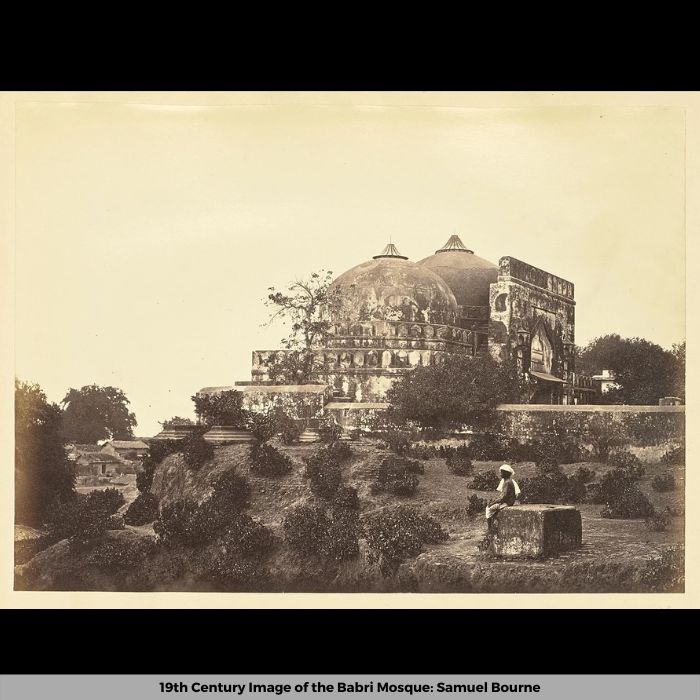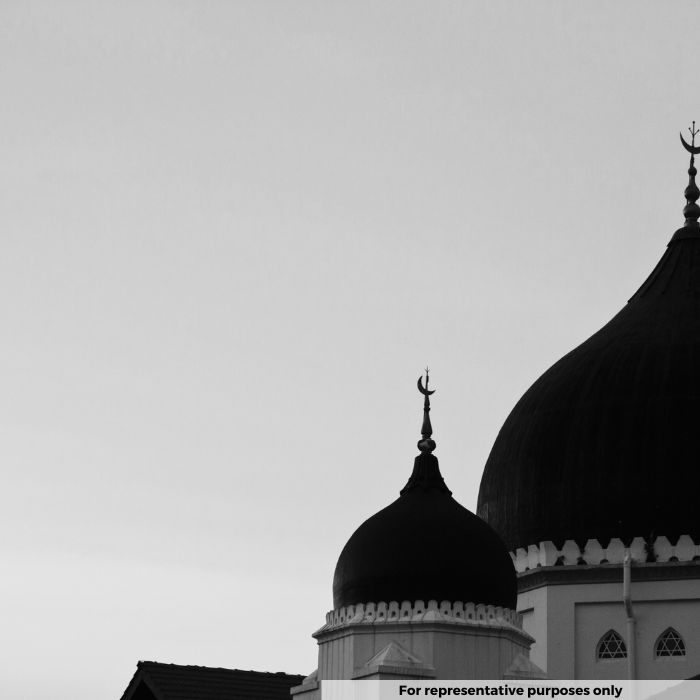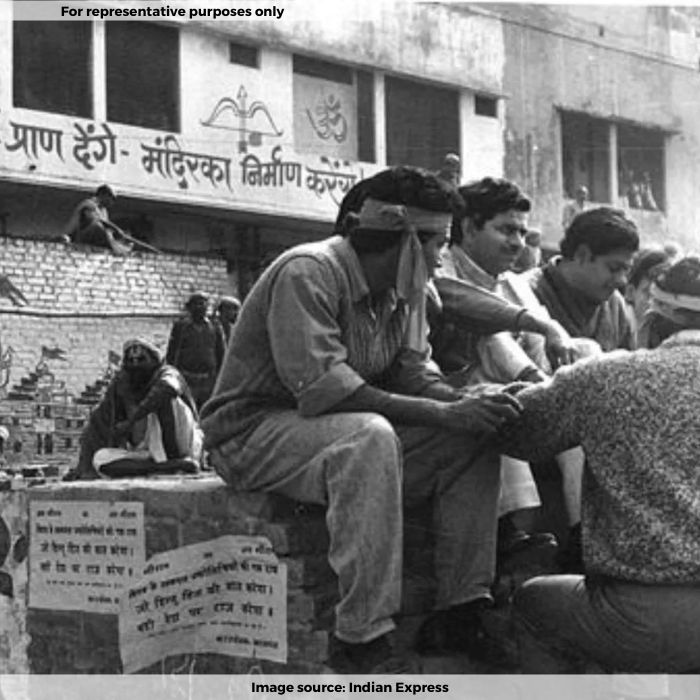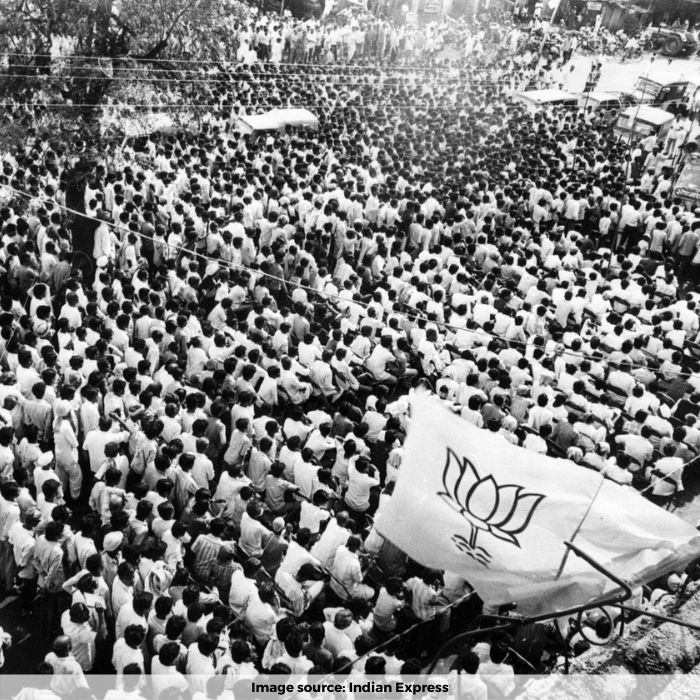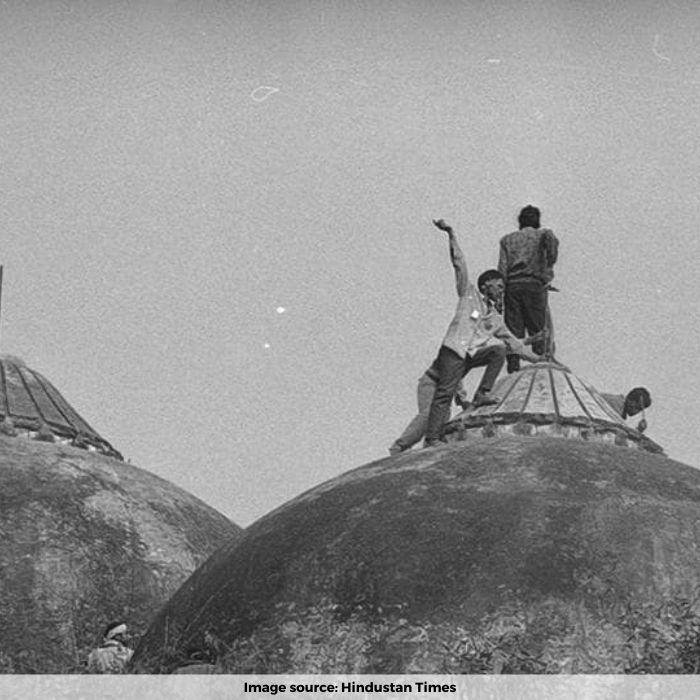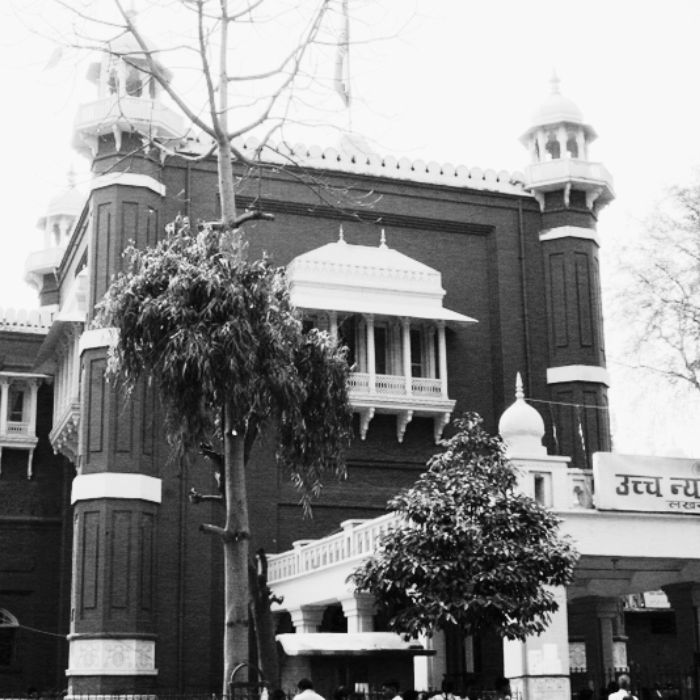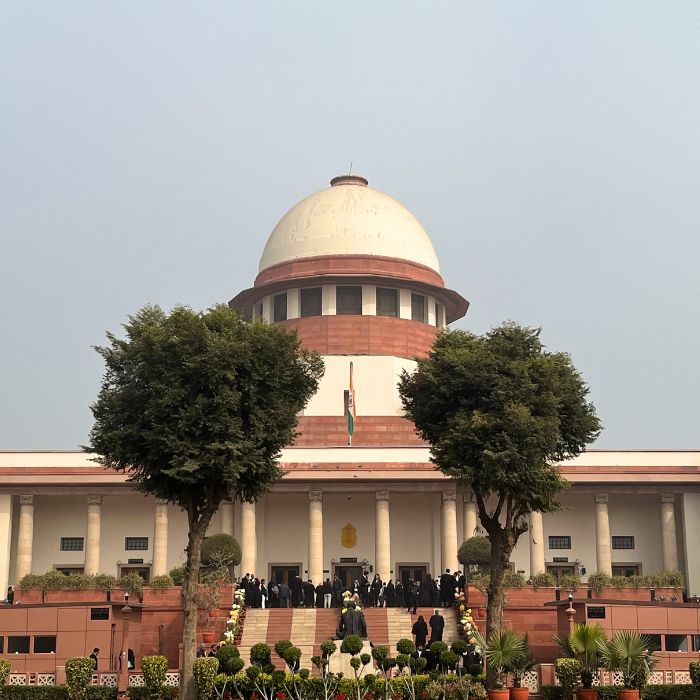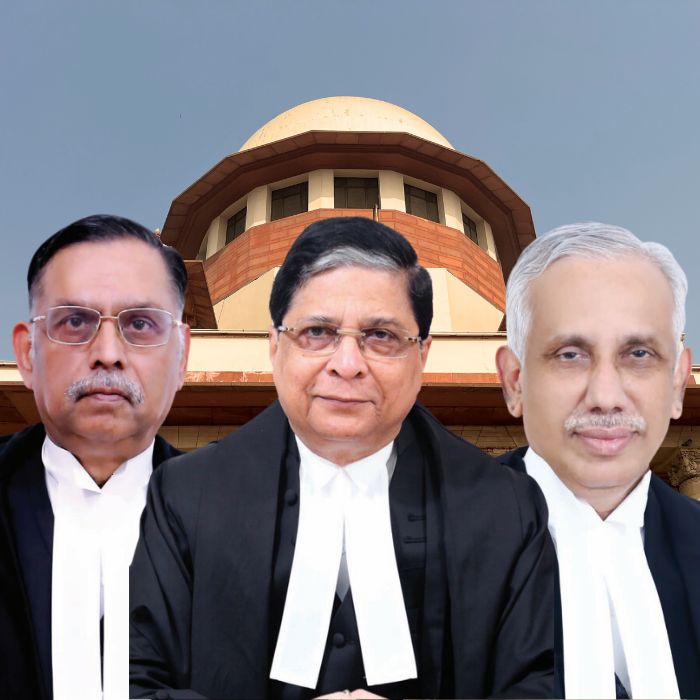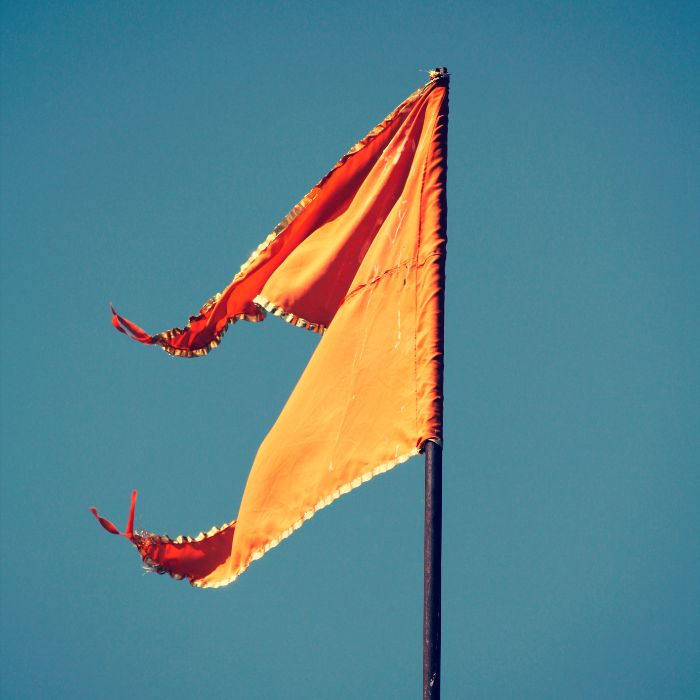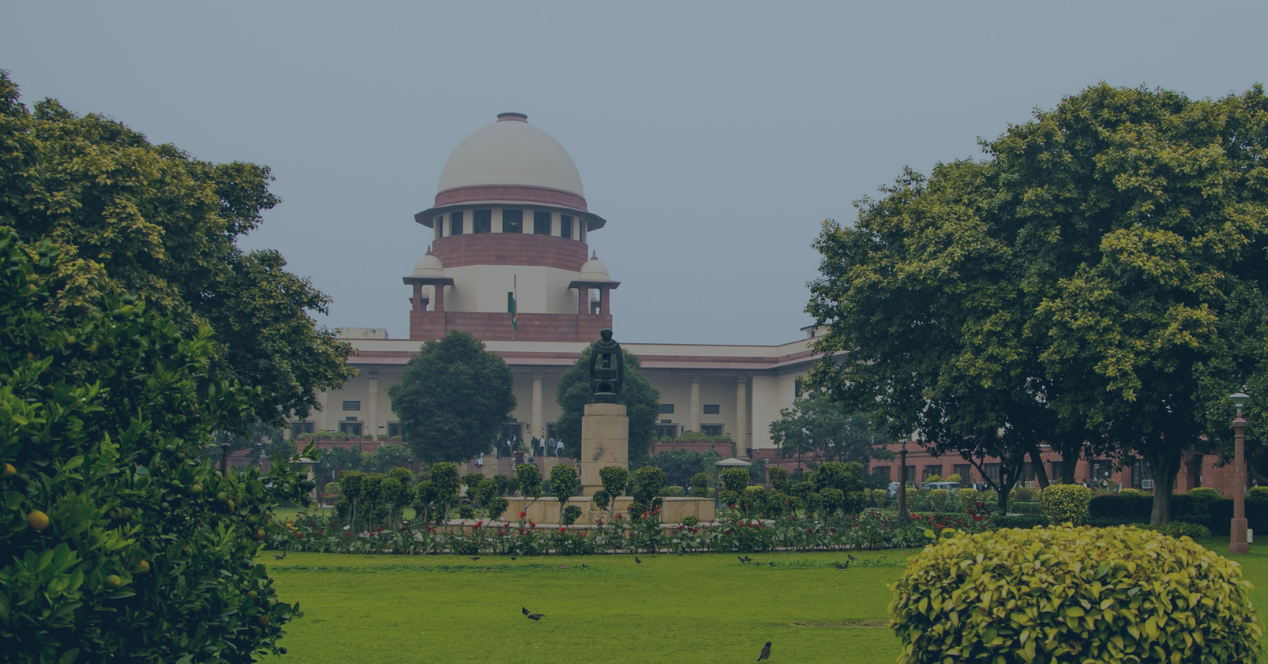Analysis
History of the Ayodhya title dispute: A timeline
SCO tracks the evolution of the Ayodhya title dispute from 1528 to 2024
1528
Babri Masjid constructed
According to an inscription on the site, the Babri mosque in Ayodhya was completed in September 1529, under the orders of Babur, the first Mughal Emperor. It is believed to be one of the three mosques constructed in the 16th century upon Babur’s orders. The other two are in Panipat and Sambhal.
1856-1857
Riots and establishment of fence
Hindus believe the mosque site to be the birthplace of Lord Shri Ram. A communal riot took place during 1856-1857. Historical records suggest that the Babri Masjid and Hanuman Garhi, a temple near the mosque, were focal points of the conflict. The result was the construction of a railing made of a grill-brick wall outside the mosque—the Ram Chabutra, which became a place of worship for the Hindus.
1885
Court dispute begins
In January 1885, Mahant Raghubar Das, the chief priest of the Ram Chabutra filed a suit seeking permission to build a temple in the outer courtyard of the mosque. The suit was dismissed along with two subsequent appeals. The District Judge and Judicial Commissioner stated that there was nothing on record to show that the plaintiff was the proprietor of the land.
1934
Communal riots in Ayodhya
On 27 March 1934, communal riots broke out in Ayodhya causing substantial damage to the domes of the mosque. It was repaired at the cost of the British Government. A fine was imposed on the Bairagis, the Vaishnavite Hindu priests, and rioters from the Hindu community to recover the cost of repair.
December 1949
Ram idol appears inside the mosque
On the night of 22 December 1949, an idol of Ram appeared in the sanctum of the Babri Masjid. Hindus saw this as a divine revelation but Muslims contended that the idol was smuggled and placed there. The prime accused was identified as Baba Abhiram Das, a local sadhu. On 23 December 1949, the City Magistrate of Faizabad and Ayodhya passed an order under Section 144 of the Code of Criminal Procedure, 1898 treating the situation as an emergency. This was followed by a Section 145 order of the Additional City Magistrate attaching the disputed site.
The site was placed under the receivership of the Chairman of the Municipal Board, Priya Datt Ram. The gates of the mosque were locked, effectively halting Muslim prayers in the area. (In its 2019 judgement, the Supreme Court accepted the Allahabad High Court’s findings that the idols had been deliberately placed inside the mosque.)
1950
Hindu sides file suits; Allahabad HC dismisses appeal
Two suits were filed in the Faizabad court. The first one by Gopal Singh Visharad and the second by Paramhans Ramchandra Das. They alleged that government officials were preventing them from entering the inner courtyard of the disputed site for worship. On the same day, an ad-interim injunction was passed in Visharad’s suit to maintain the status quo and continue sewa-puja. On 19 January 1950, the injunction was modified to prevent the idols from being removed from the disputed site and from causing interference in the performance of puja. This injunction was confirmed by a trial court in March 1951. On 26 May 1955, the Allahabad High Court dismissed appeals against this order.
1961
Sunni Central Waqf Board files a suit
On 18 December 1961, the Sunni Central Waqf Board and nine Muslim residents of Ayodhya filed a suit before the Civil Judge at Faizabad. Their ask—a judicial declaration stating that the entire disputed site of the Babri Masjid was a public mosque. They made two more requests of the court: (a) deliver possession of the disputed land; and (b) direct the removal of the idols in the mosque.
1984
Ram Janmabhoomi Movement commences
Vishwa Hindu Parishad (VHP) constituted a group to start the Ram Janmabhoomi Movement. The goal was the construction of a Ram temple at the site. BJP leader L.K. Advani was made the leader of the campaign. In 1989, PM Rajiv Gandhi allowed the VHP to perform Shilanyas (laying of the foundation stone for the temple) near the disputed area.
1986
The inner gate of Babri Mosque opened
On 25 January 1986, lawyer Umesh Chandra Pandey appealed before the Faizabad Session Court for the gates to be unlocked. Meanwhile, in a reportedly political move to allay the Hindu dissatisfaction over the reversal of Shah Bano judgement by the government, then PM Rajiv Gandhi decided to greenlight the mosque’s unlocking. On 1 February, the District Judge ordered the locks to be removed to allow Hindu “pooja and darshan”. Subsequently, a writ petition was filed before the High Court challenging the 1 February Order. An interim order was passed on 3 February directing the nature of the property not to be altered until further orders. Muslims constituted a Babri Mosque Action Committee (BMAC) in protest.
1989
All title suits shift to Allahabad High Court
Another suit was filed in 1989 on behalf of the deity, Bhagwan Shri Ram Virajman and the birthplace of Lord Ram, Asthan Shri Ram Janmabhumi. The premise of the suit was that the law recognises both the idol and the birthplace as juridical entities. On 10 July 1989, all suits were shifted to the Allahabad High Court. A three-judge bench was formed on 21 July 1989 to hear the case. Following a request from the Uttar Pradesh government, the High Court issued an interim order on 14 August 1989 to maintain the status quo at the disputed site. The state acquired 2.77 acres around the disputed area through notifications on 7 and 10 October 1991 under the Land Acquisition Act 1894.
25 September 1990
The Rath Yatra
L.K. Advani launches a Rath Yatra from Somnath (Gujarat) to Ayodhya to drum up support for the movement. Communal riots break out across the country.
6 December 1992
Babri Mosque vandalised
Babri Mosque was razed by a mob of Karsevaks (religious volunteers). The mosque, boundary wall and Ram Chabutra were destroyed. The Karsevaks left behind a makeshift temple in its place.
16 December 1992
Liberhan Commission formed
Ten days after the mosque was demolished, the Narasimha Rao government formed a committee led by retired High Court Justice M. S. Liberhan, to look into the circumstances leading to the demolition of the Babri Masjid and the ensuing communal riots across the country. The Commission was originally mandated to submit its report within three months of its formation. (The Commission submitted its report to Prime Minister Manmohan Singh on 30 June 2009).
7 January 1993
State acquires Ayodhya land
The Narsimha Rao government issues an ordinance acquiring 67.7 acres of land ( adjoining the site). The ordinance was then converted into an Act titled Acquisition of Certain Areas at Ayodhya Act, 1993. One of the objectives of the Act was to “maintain public order and to promote communal harmony and the spirit of common brotherhood amongst the people of India.” A petition challenging this Act was filed at the Supreme Court.
1994
Ismail Faruqui judgment
The Supreme Court, by a majority of 3:2, upheld the constitutionality of the Acquisition of Certain Areas at Ayodhya Act. The majority judgement, authored by Justice J.S. Verma reasoned that every religious immovable property is liable to be acquired. The Court also held that offering namaz at a mosque was not integral to Islam unless that mosque had any particular significance in Islam.
2002
Allahabad High Court orders archaeological survey
On 24 July 1996, the Lucknow Bench of the Allahabad High Court began recording the oral evidence in the Ayodhya title dispute. During the hearings, the High Court issued directions on 23 October 2002 to the Archaeological Survey of India (ASI). ASI was tasked with carrying out a scientific investigation and surveying the disputed site with Ground Penetrating Technology or Geo-Radiology.
March – August 2003
ASI survey
ASI commenced excavating the land underneath the disputed site. It claimed to have found remnants of a 10th-century Hindu temple. Many raised concerns about the findings of the report.
30 September 2010
Allahabad High Court verdict
The High Court held in a split 2:1 verdict that the Hindu and Muslim parties were joint holders of the disputed premises. One-third of the disputed property was allocated to the three parties—Bhagwan Shri Ram Virajman, the Sunni Wakf Board and the Nirmohi Akhara.
May 2011
Supreme Court stays Allahabad High Court ruling
On 9 May 2011, a Division Bench of the Supreme Court comprising Justices Aftab Alam and R.M. Lodha stayed the Allahabad High Court’s verdict on the Ayodhya dispute. The Bench described the High Court’s judgement as “strange”. Justice Lodha commented that the partition decree was unusual since it had not been requested by any party involved in the dispute.
21 March 2017
Suggestion for out-of-court settlement
Former Chief Justice J.S. Khehar suggests that all parties attempt an out-of-court settlement.
11 August 2017
Three-judge bench of the Supreme Court issues directions in the matter
A Bench comprising Chief Justice Dipak Misra, Justice Ashok Bhushan and Justice Abdul Nazeer began hearing the appeal. On 5 December 2017, the Bench refused to refer the case to a larger Bench.
8 January 2019
CJI Gogoi forms a five-judge Constitution Bench
Chief Justice Rajan Gogoi used his administrative powers to list the matter before a five-judge Constitution Bench. The Bench comprised of the CJI with Justices S.A. Bobde, N.V. Ramana, U.U. Lalit and D.Y. Chandrachud. On 10 January, a new Constitution Bench was ordered after Justice Lalit recused himself. Justice Abdul Nazeer was drafted in its place.
February 2019
Supreme Court orders mediation
On 26 February 2019, the Supreme Court referred the parties to mediation. On 8 March 2019, it appointed a panel that included former Justice Fakkir Mohamed Ibrahim Kalifulla, spiritual leader Sri Sri Ravi Shankar, and Senior Advocate Sriram Panchu.
6 August 2019
Mediation efforts inconclusive, Supreme Court resumes hearings
The parties failed to reach a comprehensive settlement. Consequently, the Supreme Court resumed hearings on the dispute on 6 August 2019. A mediation report submitted on 16 October 2019 indicated a partial settlement but it was not binding as it wasn’t agreed upon by all disputants.
November 2019
Supreme Court judgement
On 9 November 9 2019, the top court delivered its judgement. It awarded the title to the deity, Shri Ram Virajman and directed the State to grant the Sunni Waqf Board five acres in a “prominent” location in Ayodhya for the construction of a mosque.
August 2020
August 2020: Foundation stone for the Ram Mandir
On 5 August 2020, Prime Minister Narendra Modi laid the foundation stone for the proposed Ram Temple in Ayodhya.
22 January 2024
Inauguration of the Ram temple
In a grand ceremony reportedly attended by over 7000 people, the Ram temple at Ayodhya was inaugurated with PM Narendra Modi performing the ‘Pran Pratistha’ ceremony.




